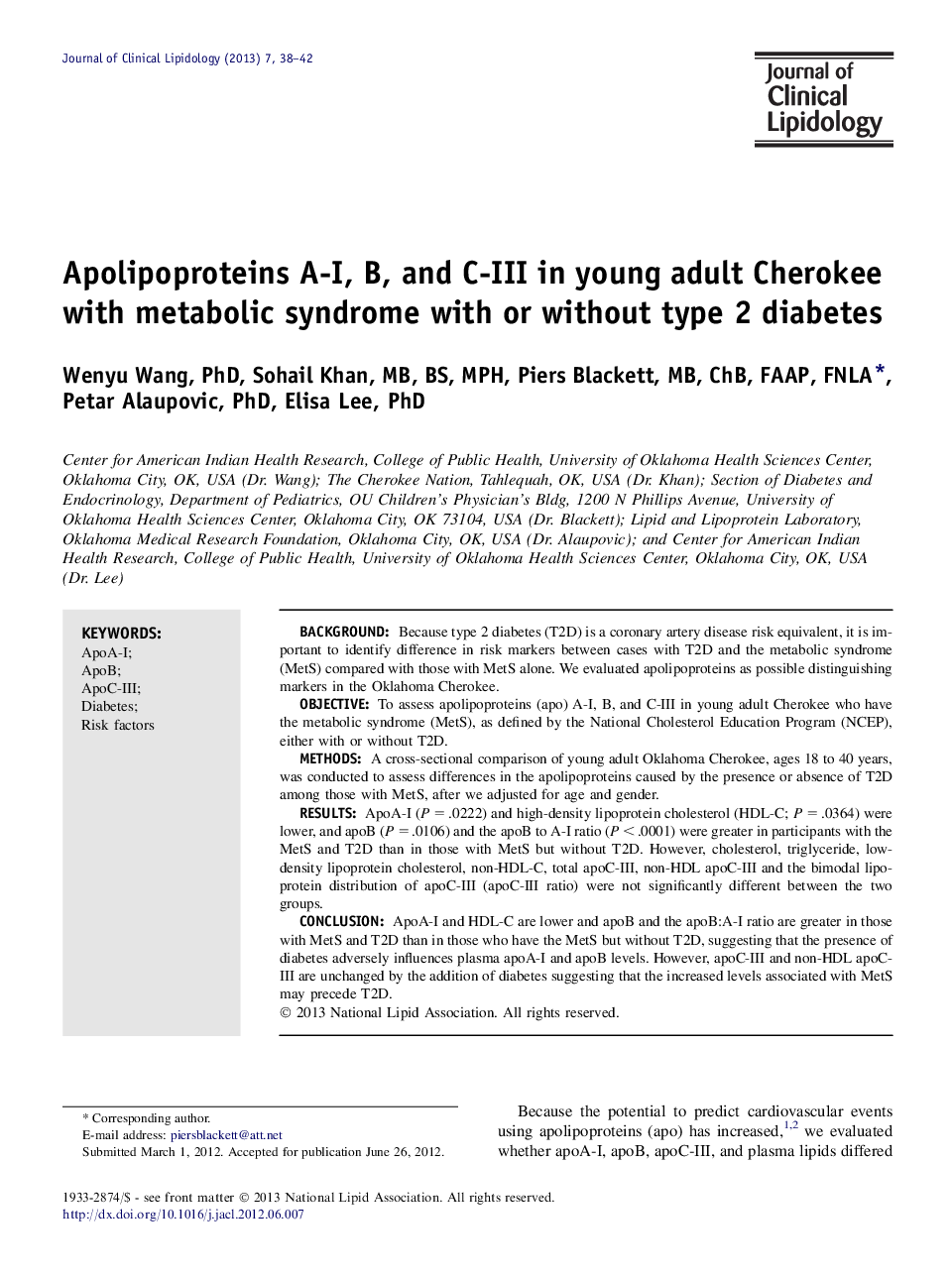| Article ID | Journal | Published Year | Pages | File Type |
|---|---|---|---|---|
| 2966599 | Journal of Clinical Lipidology | 2013 | 5 Pages |
BackgroundBecause type 2 diabetes (T2D) is a coronary artery disease risk equivalent, it is important to identify difference in risk markers between cases with T2D and the metabolic syndrome (MetS) compared with those with MetS alone. We evaluated apolipoproteins as possible distinguishing markers in the Oklahoma Cherokee.ObjectiveTo assess apolipoproteins (apo) A-I, B, and C-III in young adult Cherokee who have the metabolic syndrome (MetS), as defined by the National Cholesterol Education Program (NCEP), either with or without T2D.MethodsA cross-sectional comparison of young adult Oklahoma Cherokee, ages 18 to 40 years, was conducted to assess differences in the apolipoproteins caused by the presence or absence of T2D among those with MetS, after we adjusted for age and gender.ResultsApoA-I (P = .0222) and high-density lipoprotein cholesterol (HDL-C; P = .0364) were lower, and apoB (P = .0106) and the apoB to A-I ratio (P < .0001) were greater in participants with the MetS and T2D than in those with MetS but without T2D. However, cholesterol, triglyceride, low-density lipoprotein cholesterol, non-HDL-C, total apoC-III, non-HDL apoC-III and the bimodal lipoprotein distribution of apoC-III (apoC-III ratio) were not significantly different between the two groups.ConclusionApoA-I and HDL-C are lower and apoB and the apoB:A-I ratio are greater in those with MetS and T2D than in those who have the MetS but without T2D, suggesting that the presence of diabetes adversely influences plasma apoA-I and apoB levels. However, apoC-III and non-HDL apoC-III are unchanged by the addition of diabetes suggesting that the increased levels associated with MetS may precede T2D.
